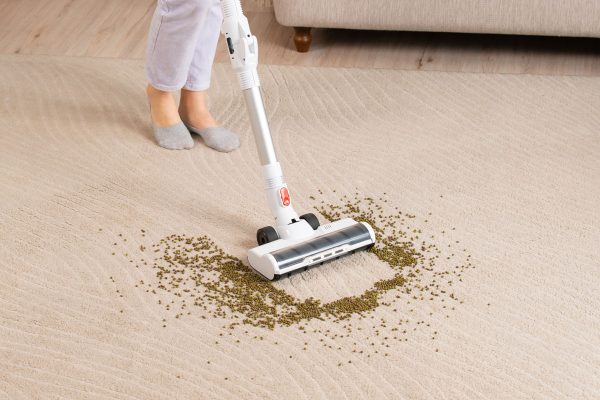Tile installation can be tricky, especially when you’re thinking about the correct adhesive to use. Now, you’re wondering if there are differences between wall and floor tile adhesives. So we researched for your convenience and here’s the answer we found.
Generally, there are no significant differences between wall and floor tile adhesives. These products typically help prevent the tiles from moving or falling. So it’s possible to use these adhesives interchangeably.
However, it doesn’t mean that you can always interchange the use of wall and floor tile adhesives. So continue reading as we talk about the similarities and differences of these adhesives in greater detail. We’ll also discuss other relevant yet important information, such as the right way to install tiles.
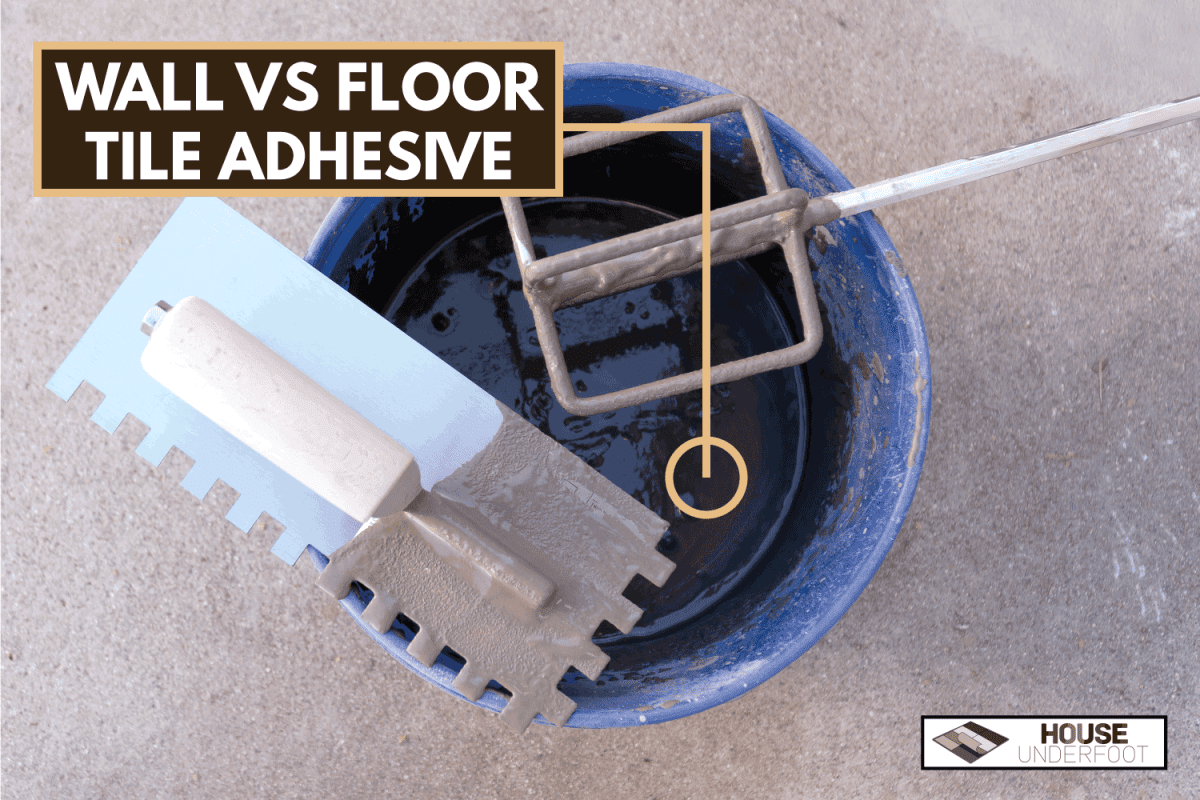
Is Floor And Wall Tile Adhesive The Same?
Floor and wall tile adhesives generally serve the same purpose. These products often provide sufficient tack for the tiles to become relatively immovable.
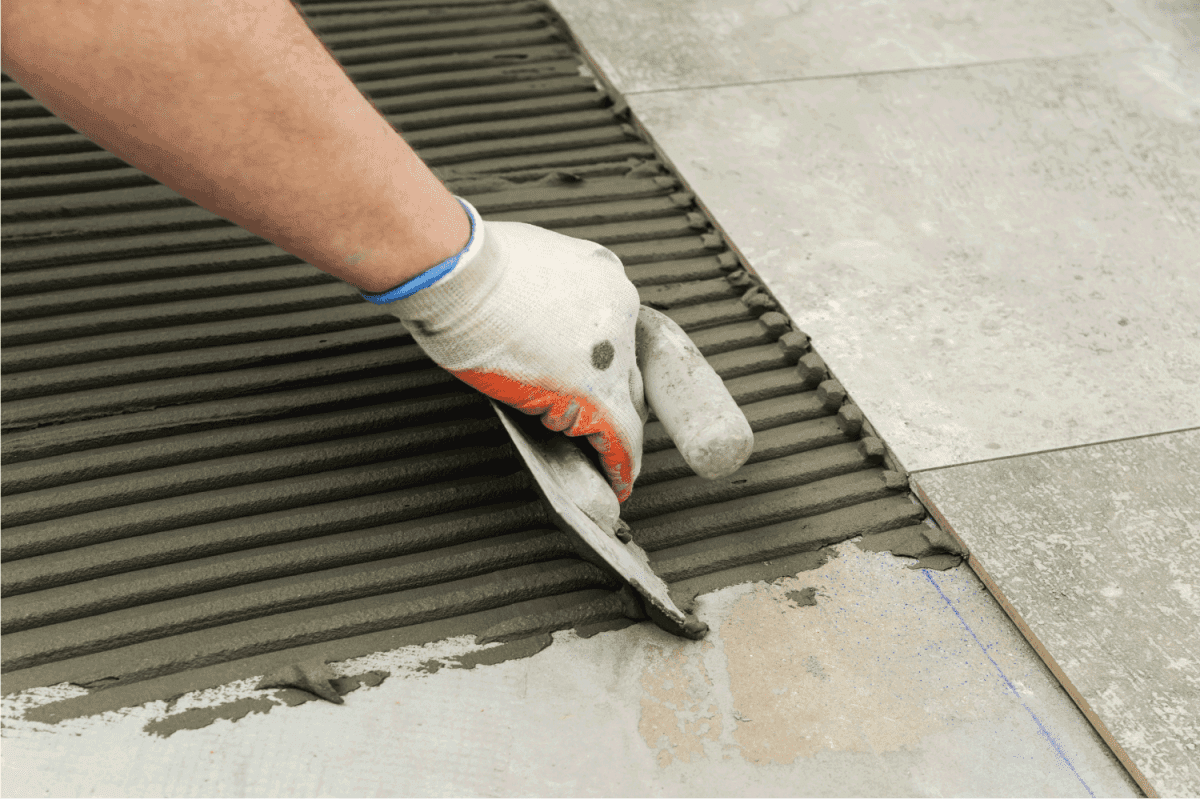
However, certain wall tile adhesives might not be ideal for floor tile installation. The reason is that floor tiles are usually heavier than wall variants. So some tile adhesives for walls may have weaker sticking prowess, which might make floor tiles move when subject to medium to heavy traffic.
Can You Use Self-Adhesive Floor Tiles On Walls?
It’s possible to install floor tiles with self-adhesives on walls. But you need to think about certain factors, such as the adhesive’s strength and the installation procedure to prevent the tiles from falling.
Some of the things to contemplate when you plan on using self-adhesive floor tiles on walls are:
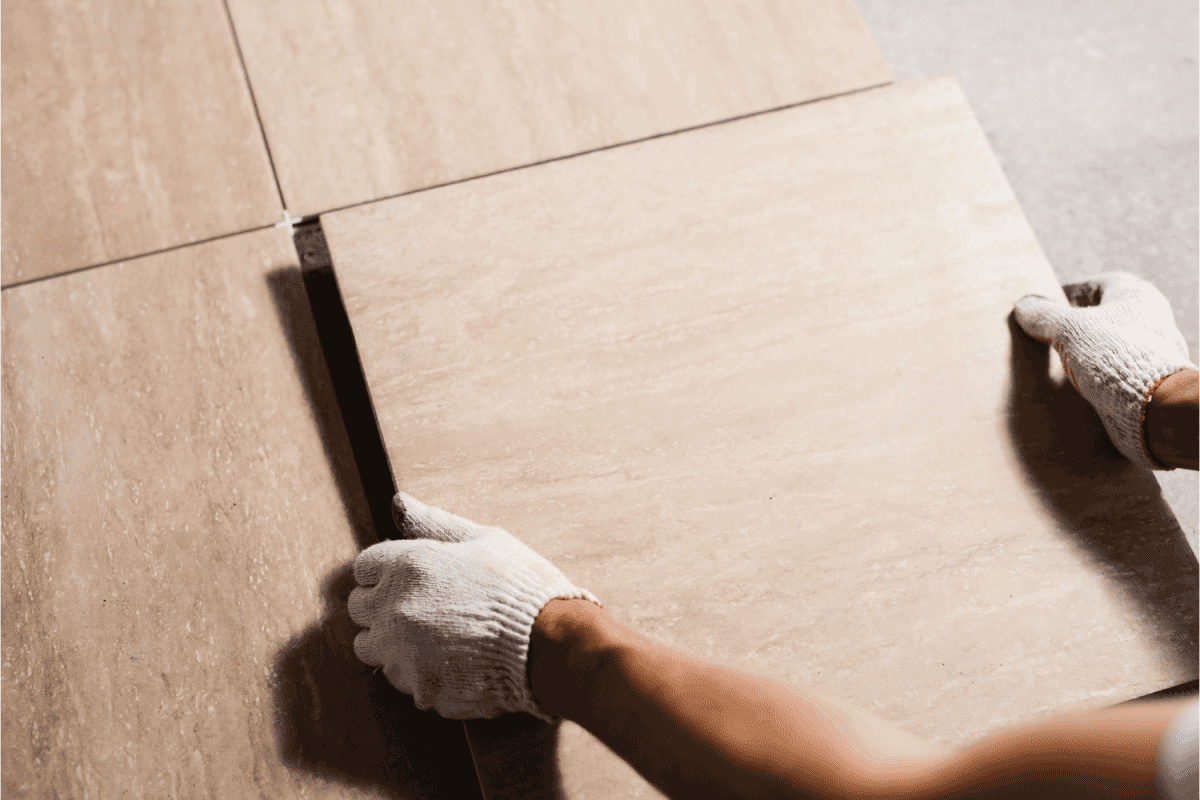
Surface Preparation
Keep in mind that dust and other small particles can reduce the adhesive’s stickiness. So, ensure that the tiles' underlayment is clean before proceeding with the installation. Also, don't forget to remove old adhesives, especially if you're replacing old tiles.
Watch the video below if you need help in preparing your surface for tiling:
Use A Sharp Cutting Tool
Dull cutting utensils like knives and saws can ruin the tiles’ appearances and their stick-on adhesives. For example, using a blunt knife can leave unsightly scratches on the material. So replace the blade on your utility knife or buy a new saw to ensure a clean cut for your tiles.
Check out this tile saw on Amazon.
Start From The Bottom
Don’t start the tile installation from the top of the wall. Otherwise, gravity and the weight of the material can weigh it down, which might result in errors. Instead, begin placing the tiles from the bottom. That way, this bottom row can act as a support for the tiles installed above.
Peel Slowly
Self-sticking adhesives usually come with peel ready-to-peel backings. But don't peel off this material in one go. Otherwise, it can be challenging to realign the self-adhesive if you make a mistake.
Instead, peel slowly and only about halfway through the material. Then, set the tile into position before peeling the rest of the adhesive backing.
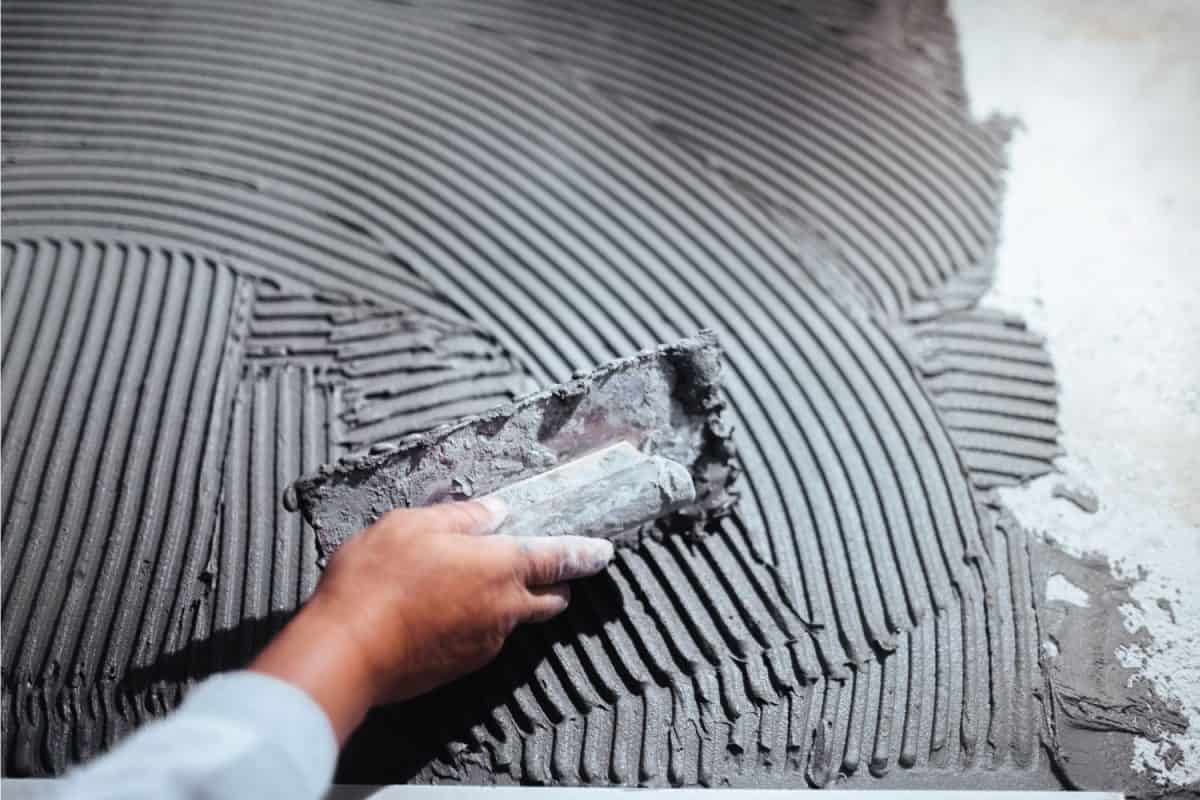
How Do You Install Wall Tile Adhesive?
Keep in mind that tile adhesives have different variations. Aside from peel-off variants, you can also find products that you need to mix to install tiles.
Here’s a quick look at how to mix and install wall tile adhesive if you find it interesting to learn about this process:
What You’ll Need
- Tile adhesive powder
- Bucket
- Water
- Hand drill with mixing paddle attachment
- Notch spreader
- Trowel
- Preferred tiles
- Tile leveling system
- Microfiber cloth
Step-by-Step Guide
- Pour the adhesive powder into a bucket of water. The amount to use depends on your project’s needs and the manufacturer’s guidelines.
- Attach a hand drill with a mixing paddle and mix the solution until it has a thick paste-like consistency.
- Use a trowel to scoop a sufficient amount of adhesive from the bucket. Then, apply the mixture to the wall.
- Achieve an even spread with the adhesive with the notched spreader.
- Place a tile onto the adhesive. Twist the material slightly for it to embed into the mixture.
- Place the next tile adjacent to the first one. Next, apply a fastener from the tile leveling system in the gap between the two tiles.
- Repeat steps 3 to 6 for the rest of the wall.
- Once finished, remove excess adhesive with a damp microfiber cloth or towel.
Check out this tile adhesive on Amazon.
As with relatively any other tile installation job, make sure that the wall is clean before applying the adhesive mixture and placing the tiles. If not, dirt and debris can hinder the adhesive’s efficacy, which may cause the tiles to fall.
You can also watch the video below to gain additional insight into this procedure:
How Do You Apply Floor Tile Adhesive?
Floor tile adhesive applications by using the mixture generally follow the same steps used to apply a wall tile adhesive mentioned in the previous section. However, you may also add more adhesive mixture to the floor tile to ensure it stays in its position.
Do this procedure by scooping a sufficient amount of mixed adhesive with a trowel. Then, place that mixture onto the back of the floor tile. Next, scrape the product with a trowel while following a rainbow-like pattern.
Remember, don’t apply more adhesive than necessary. You can also watch the video below to see the appropriate way to approach this task:
How Do You Remove Tile Adhesive?
In this section, you’ll learn how to remove excess dried tile adhesive from your installation. These particles might drip onto your tiles, which may cause small bumps and imperfections.
What You’ll Need
- Hand drill with a wire brush attachment
- Sandpaper
Step-by-Step Guide
- Hold the hand drill with the wire brush attachment at a slight angle. Then, use that tool to remove the adhesive from the tiles.
- Remove the leftover adhesive from the tile with relatively heavy-grit sandpaper.
- Wipe or sweep the dust.
Watch the following video if you need a visual representation of these steps:
Take note that some harm might befall your tiles because of this relatively aggressive method of removing tile adhesive. If these imperfections appear, watch the video below if you need help with the repairs:
What Are The Tools Used To Apply Tile Adhesive?
Tile adhesive applications usually require the use of these tools:
Mixing Paddle
Also called a paddle mixer, you can typically use this piece of equipment for blending water and powdered tile mixture in a bucket. Use it with a compatible hand drill to hasten the mixing process.
Check out this product on Amazon.
Notched Trowel
Spreading tile adhesive over a surface generally falls under the notched trowel’s job. As its name implies, this particular trowel has notches to create the appropriate thinset level. You can also use the notched trowel for other applications, such as combing, scooping, and finishing tile adhesives.
Check out this product on Amazon.
Bucket
Plastic mixing buckets are often one of the standard tools used to hold tile adhesive mixtures. It can also be ideal to use new buckets instead of mixing the adhesive powder and water in a used bucket. If so, the other substances in the old bucket may contaminate the mixture, resulting in reduced potency.
Check out this product on Amazon.
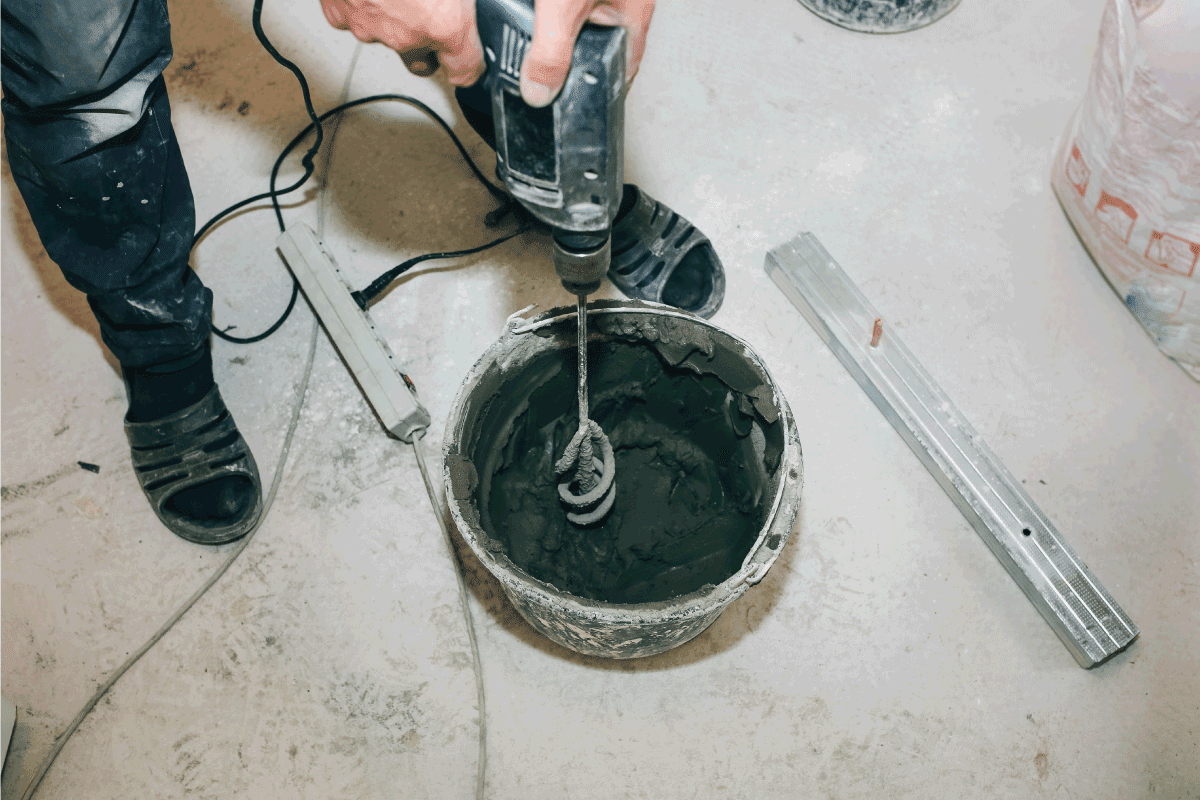
Final Words
It's possible to use wall tile adhesives on floor tiles. You may also use floor tile adhesives in installing wall tiles. However, always remember that not every tile adhesive is versatile enough for you to use on floor and/or wall tile installations. So make sure to read the product's description and the manufacturer's guidelines before finalizing your purchase.






